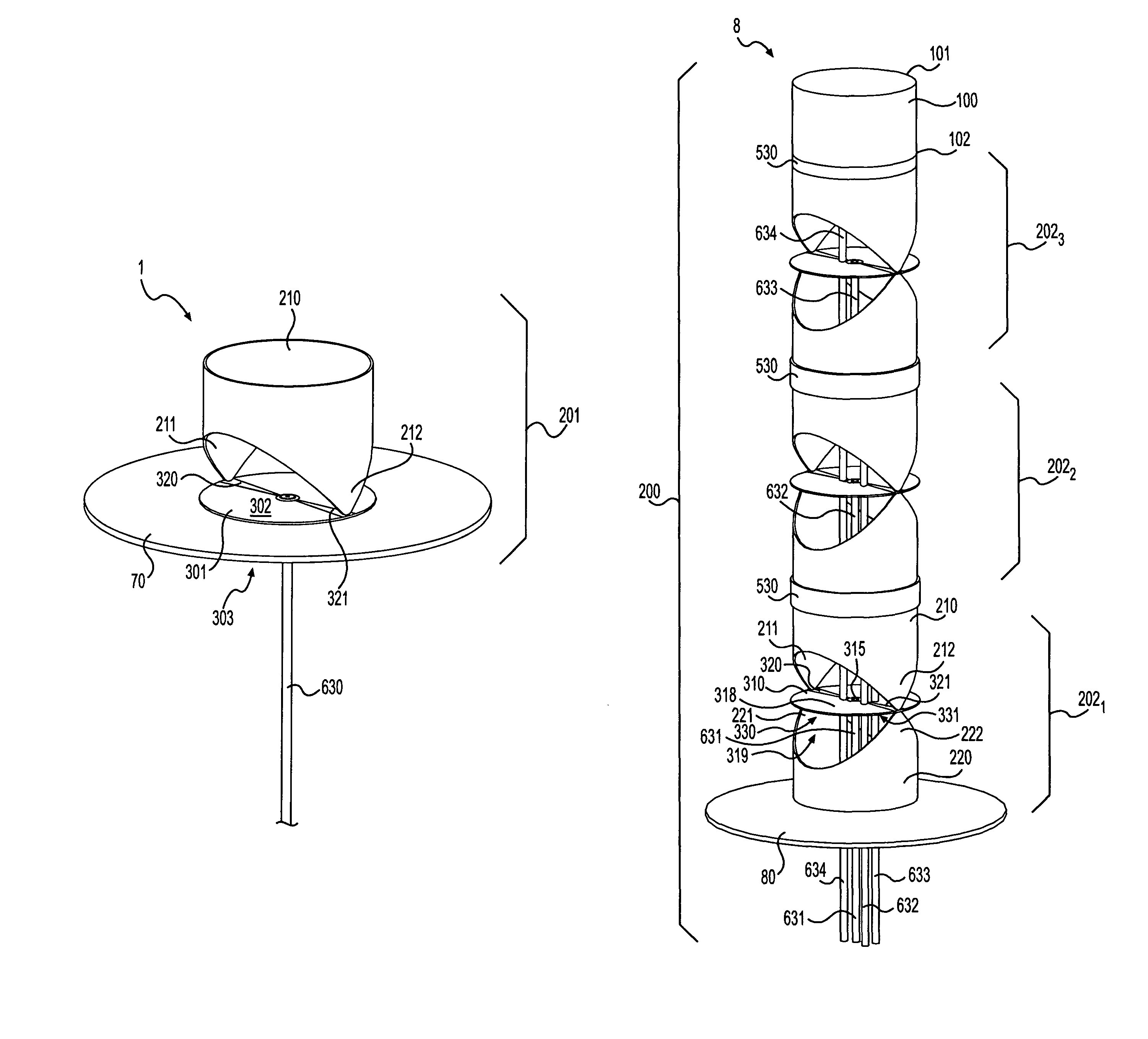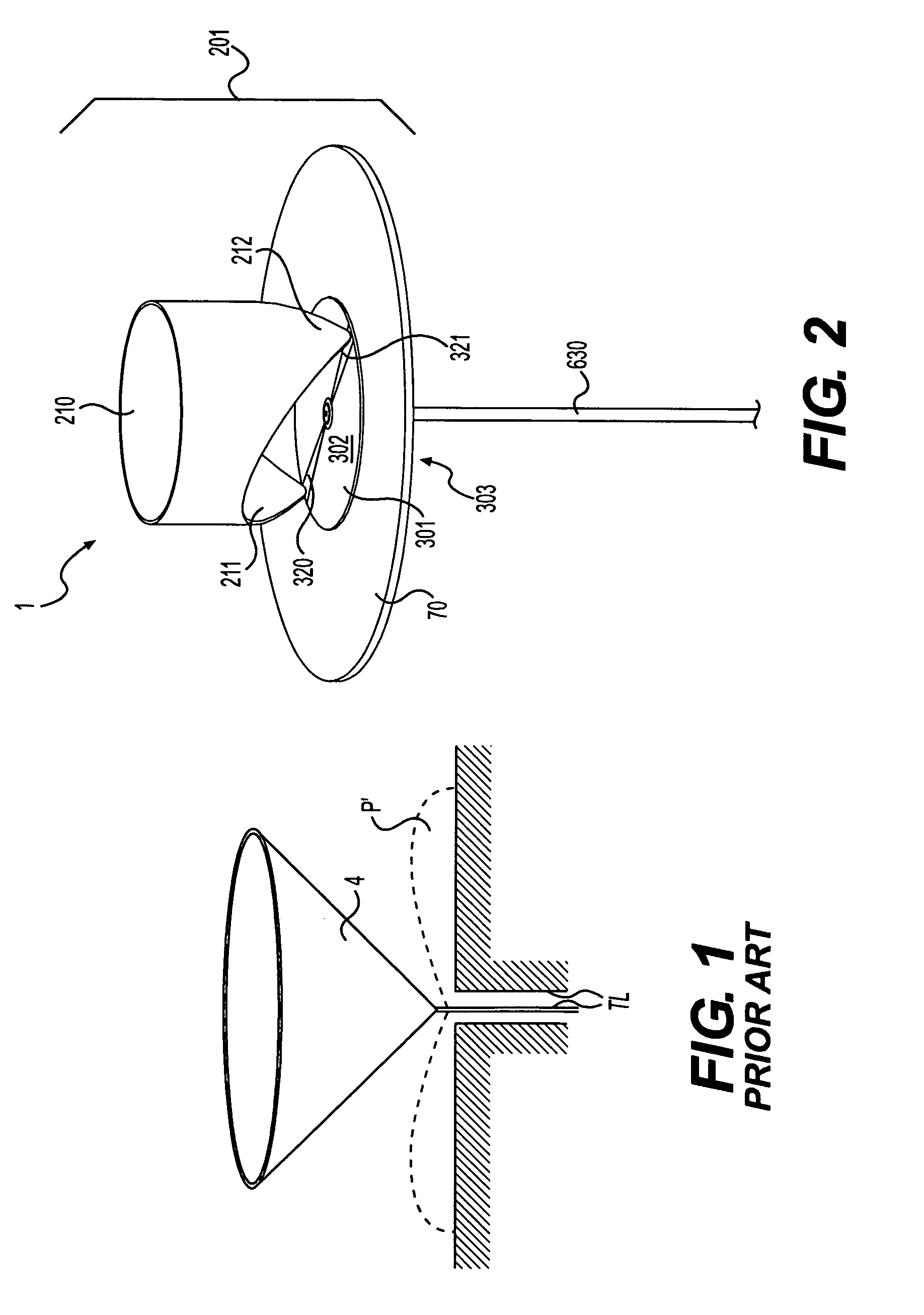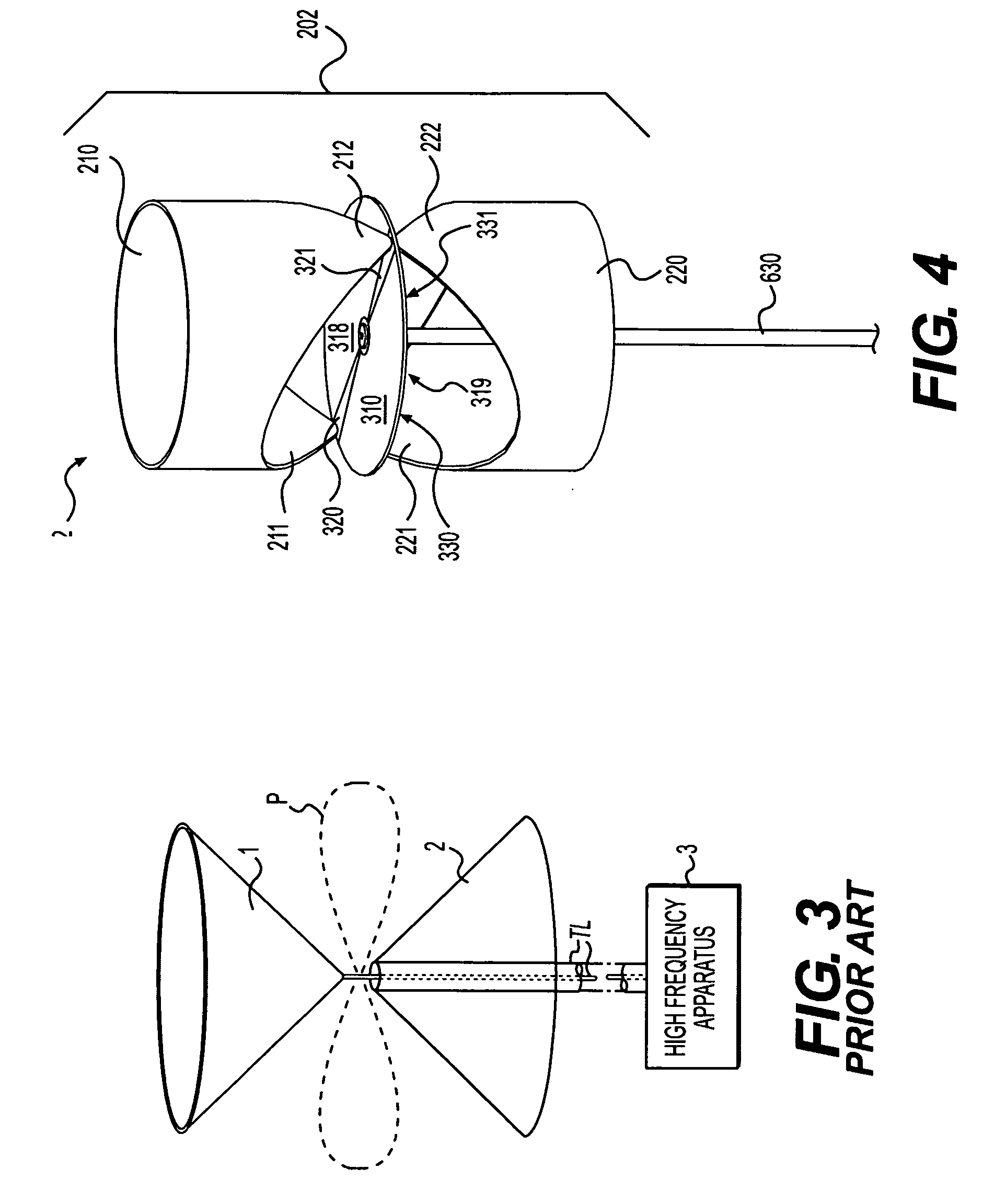Broadband antenna system allowing multiple stacked collinear devices
a collinear device and antenna system technology, applied in the field of broadband antenna systems, can solve the problems of inability to stack coupling and interference, and inability to achieve the stacking of multiple antenna elements or other devices,
- Summary
- Abstract
- Description
- Claims
- Application Information
AI Technical Summary
Benefits of technology
Problems solved by technology
Method used
Image
Examples
first embodiment
[0060]Referring to FIG. 1, a prior art monocone antenna disposed above a ground plane is shown. The prior art monocone exemplifies the conical shape, single conic tip and single feed found in the known art. In comparison, a “coneless monocone” according to the present invention is shown in FIG. 2. Coneless monocone antenna system 1 of the present invention comprises modified “coneless” radiator 210, wherein the feed portion of the cone is cut away and the cone is modified to be substantially cylindrical, leaving “tapered feed points”211 and 212 in place of the typical prior art conic tip. Although not shown, the monocone antenna system of the present invention also contemplates a design having a single tapered feed point in place of the typical prior art conic tip.
[0061]With continuing reference to FIG. 2, coneless monocone antenna system 1 of the present invention preferably comprises coneless monocone 201, having coneless radiator 210 disposed on limited ground plane 70, which fur...
second embodiment
[0063]Referring now to FIG. 3, a typical prior art biconical antenna is shown, comprising two conic tips and a single feed region. In comparison in FIG. 4, a “coneless biconical” antenna according to the present invention is shown. Referring now to FIG. 4, coneless biconical antenna system 2 preferably comprises modified upper coneless radiator 210, wherein a portion of the conic region of the cone is cut away and the cone is modified to be substantially cylindrical, leaving two upper “tapered feed points”211 and 212 in place of the known upper conic tip, and modified lower coneless radiator 220, having the same shaped or cut-away portion as upper coneless radiator 210, and leaving two lower “tapered feed points”221 and 222 in place of the known lower conic tip.
[0064]With continuing reference to FIG. 4, coneless biconical antenna system 2 of the present invention preferably comprises coneless biconical 202, having upper coneless radiator 210 disposed on balun 310, which further comp...
fifth embodiment
[0068]Referring now to FIG. 7, the present invention is shown as coneless monocone antenna system 5. Coneless monocone antenna system 5 preferably comprises coneless monocone 201, having coneless radiator 210 disposed on limited ground plane 70, which further comprises microwave substrate 301. Microwave substrate 301 further comprises upper surface 302 and lower surface 303 (not visible in the perspective view). As embodied herein, coneless radiator 210 preferably is shaped to provide first tapered feed point 211, second tapered feed point 212, third tapered feed point 213, and fourth tapered feed point 214, which are electrically connected respectively with first feed side trace 320, second feed side trace 321, third feed side trace 322, and fourth feed side trace 323 on upper surface 302 of microwave substrate 301.
[0069]As embodied herein, the highest frequency of operation of the present invention may be determined by the number of feed points, the spacing between the feed points...
PUM
 Login to View More
Login to View More Abstract
Description
Claims
Application Information
 Login to View More
Login to View More - R&D
- Intellectual Property
- Life Sciences
- Materials
- Tech Scout
- Unparalleled Data Quality
- Higher Quality Content
- 60% Fewer Hallucinations
Browse by: Latest US Patents, China's latest patents, Technical Efficacy Thesaurus, Application Domain, Technology Topic, Popular Technical Reports.
© 2025 PatSnap. All rights reserved.Legal|Privacy policy|Modern Slavery Act Transparency Statement|Sitemap|About US| Contact US: help@patsnap.com



